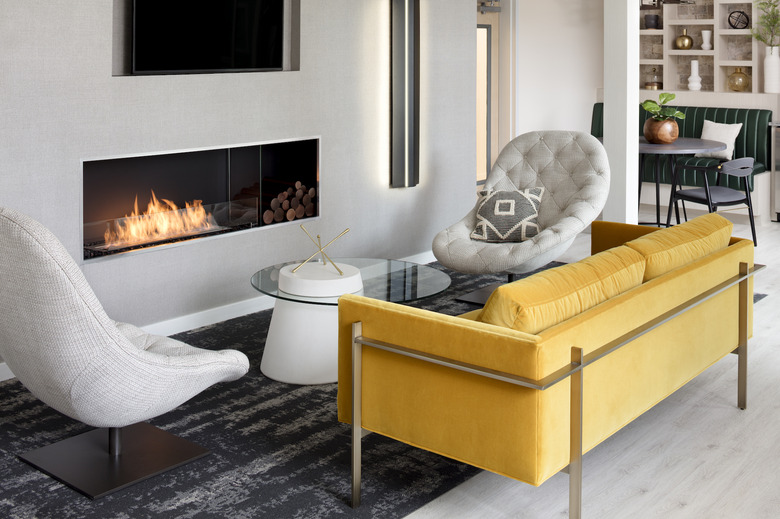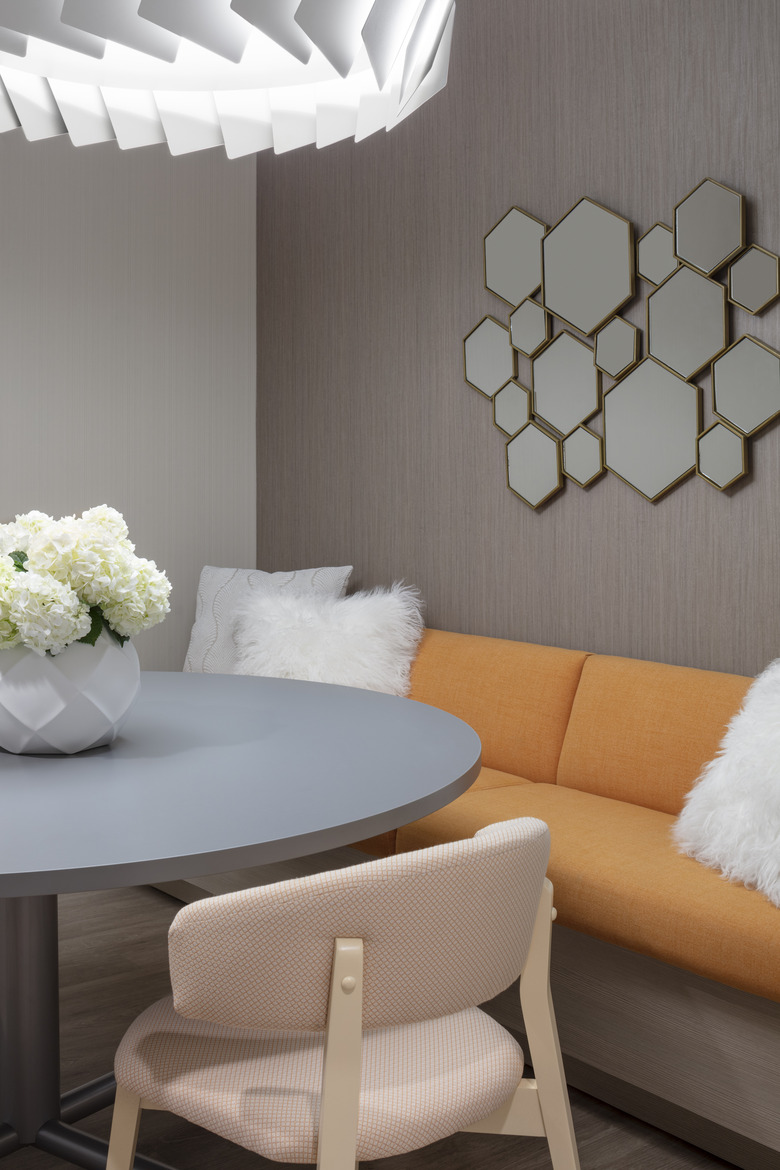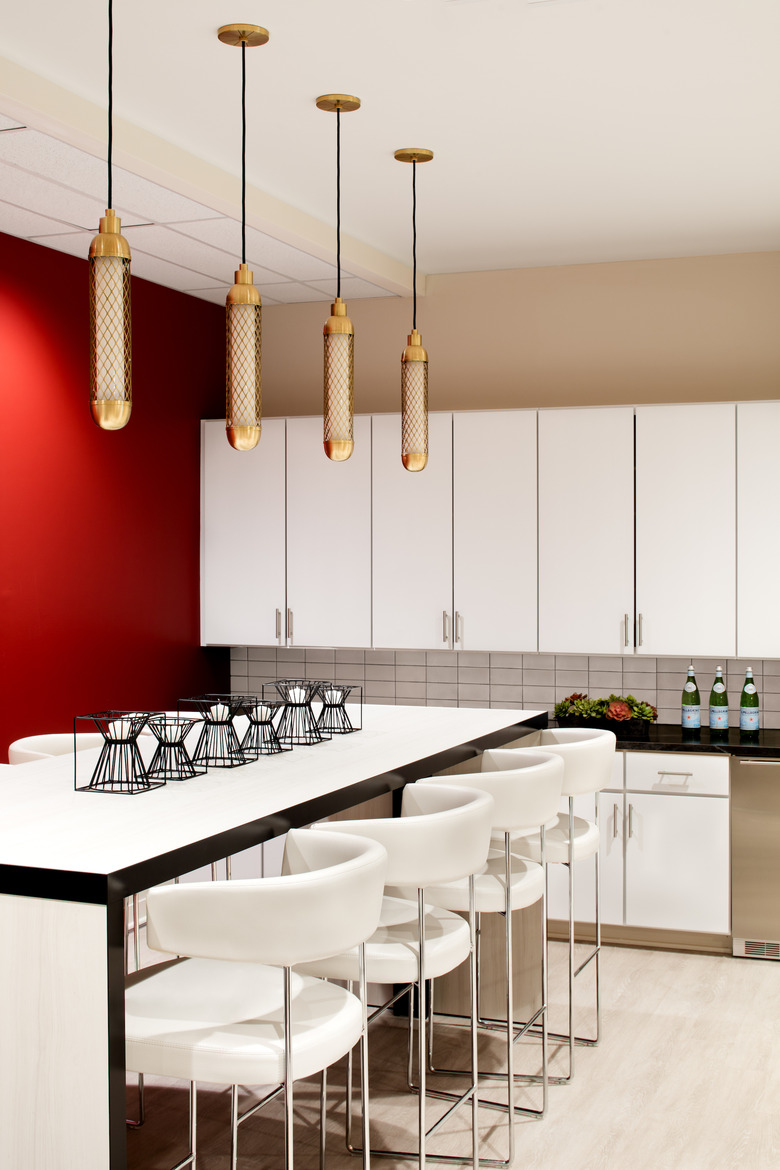Kia Weatherspoon On Design Equity, Advocacy, And Access
When you think "affordable housing," you probably picture bland, stark, colors, harsh edges, and loveless materials. You likely don't imagine beauty and aesthetics being given any real consideration. But Kia Weatherspoon is trying to change that.
A self-starter, she climbed her way up the ladder from a design coordinator role to then founding Determined by Design, her Washington, D.C.-based design firm. Weatherspoon now acts as a Director of the CIDQ Board of Directors and the Board of Managers at the Moore College of Art and Design. She teaches at Virginia Commonwealth University; is a professional speaker, giving talks everywhere from Business of Home's Future of Home conference and beyond; being named an Emerging Leader on the Housing Association of Non-Profit Developers 2017 Hand Housing Achievement Awards; and gaining a spot on the Washington Business Journal's 2018 40 Under 40. With all of that being said, one thing is at the center of Weatherspoon's drive: empathy.
Weatherspoon doesn't consider herself a "savior" of design, nor does she pride herself on swooping in and changing the lives of the people who come to inhabit the spaces she designs. Rather, she sees the humanity of us all, and she relates to the feeling of needing a safe, comfortable place to call home.
Below, she shares what keeps her motivated and her hopes for the design industry.
Hunker: You're the president of Determined by Design, whose mission is "to advocate for design equity so every person's value is uplifted by the spaces they inhabit." How do you define "design equity?"
Kia Weatherspoon: This is what design equity is: Design equity is a 35-year-old white woman with two Masters Degrees probably making $100,000 a year. If we were to take her and say, "We want you to live in this other building that is technically affordable housing," she would say, "Okay, I can live in this building — because it looks exactly like my building." It's about designing spaces that don't differ based on socioeconomic standing. That scenario I gave you would never happen due to the sheer fact that any person who is of means wouldn't want to live in affordable or low-income housing [largely] because it looks less-than. But the person [who is] in that housing doesn't deserve a place that is less-than.
Hunker: What does it mean to make someone feel "uplifted" in their own space?
KW: It's one of those intangible things. You can't say, "Man, it's the LVT [luxury vinyl tile]." It's just the feeling when you walk into your home or your space and it brings you solace and it brings you closer to beauty, and to joy, that you didn't know you needed. Especially in the vein of affordable and low income housing, a lot of times, the people in those communities don't get that respite and beauty. It's giving someone access to the aesthetically pleasing.
Hunker: How has your understanding of Determined by Design's mission shifted as time has passed from its launch to now, especially given our increasingly political world?
KW: The mission has not shifted. The mission has always been to introduce those things — softness, beauty, aesthetic — even in a political world. A lot of times you'll hear, "We need to make this space dignified." Now, in 2021, that's the bare minimum. Now, we're pivoting: our language is saying, "Dignity isn't enough." [Especially since] we're still spending all of this time in our homes, we need beauty, softness, and adornment. Those things aren't just for the affluent. It's something everyone needs access to. It's not about politics; it's about people. It's shifting a greater focus and lens to the people who don't have the greatest representation.
Hunker: In a June 2020 interview with Fast Company, you said, "Representation matters. I want young designers of color to see themselves in my success and strive to surpass me." In terms of representation, what would you like to see from leaders in the design world in the next five or 10 years?
KW: I would like to see leaders — specifically leaders of color — in academia. I would like to see them at the collegiate level. It starts with education and possibility. I would like to see design leaders putting a greater emphasis on getting into not just high schools, but middle school and grade school, so that students can understand what it means to be an interior designer, what it means to be a creative professional, and that these career paths are a possibility. I think that's the problem: If you go to any college program in the U.S. with an interior design program, it lacks diversity still — I know because I teach it! I need us to start thinking about the people we want to get into the college years from now. Mentorship is the only way that we are gonna bridge this gap.
I'd also like to see them try to mend the relationships with designers of color right now who have been disenfranchised and burnt out and underpaid. I want to see the industry find ways to bring them back in so that they can do this mentoring and advocating.
Hunker: How do you remain motivated despite challenges or people who don't yet grasp the value of your work?
KW: We just finished a project, and I'm on site for something, and this woman [comes in] and she's looking at it and says, "Is this affordable housing? I've never seen affordable housing look like this. Look at the interiors, look at the art." So I'm hearing firsthand how people, when they walk through this space, say things like, "I can't believe this is affordable housing — I would want to live here." That motivates me. That project took three years to complete. It's not about instant gratification; it's about long term impact. We're doing that day in and day out.
Hunker: Who are some of today's designers that you admire?
KW: Sequoyah Hunter-Cuyjet, Sydney White, Carly Werner, Ashley Swann. Fun fact: they all work for my team. Those are the people I admire. They all come from different markets and different segments of the industry; They've all done luxury work in hotels and multifamily. But they said, "We want to do this work. This is the work that impacts peoples lives." This is what makes design about greater good and not just pretty finishes.
Hunker: What advice would you have for designers and creators who want to combine their passion for diversity and advocacy with their design careers?
KW: You have to start with an empathetic lens. Not in a savior mentality. We've had vendors and manufacturers say they want to be a part of [our work]. Can we donate discontinued products, or something we're discarding? Can we donate that to your project? While it comes from a good place, they're missing the point. We don't need a handout; we need designers and creatives to speak up when they see inequities happening. Don't see this work as trying to do good. See it as this is how it's supposed to be. We don't need folks who want to save people in poor communities. We need creatives who understand, my voice and my craft are the strongest things I have.
Hunker: What's one thing that inspires you and your work that someone might never guess?
KW: There's a song, it's by this group called Needtobreathe, it's called "Difference Maker." Being a small business owner is hard. That song reminds me that it's greater than me.



